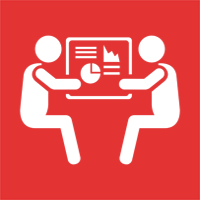Stat Watch: Turning the Table on Customer Churn Using Predictive Analytics

The ability to recognize when a customer is about to cancel their subscription, decide not to renew their contract or skip their next regular purchase, is critical to the success of a company that relies on recurring revenue.
As more enterprises take part in the subscription economy - data from MGI Research indicates it will be a $102 billion market over the next four years - companies must invest in the right strategies and solutions in order to analyze, monitor and predict customer churn.
By understanding when and why consumers may leave, companies can adapt and optimize their content development, digital experiences and channel outreach in real-time as well as learn to prevent the reason for revenue loss with similar audiences in the future.
The technology industry is laying the groundwork for predictive marketing, but it's up to executives to invest in the solutions that can help them improve customer retention in both the short and long term. Even though a 2016 IBM study of the C-suite reveals that predictive analytics is already used by 69 percent of chief marketing officers, it is not a simple endeavor for most enterprises.
Companies reporting the use of predictive analytics are likely still struggling to connect the many available data sources to get an accurate picture of who a customer is, why they have subscribed and why they may leave. For instance, a customer may voice their dissatisfaction for a brand on social media - a message that could never arrive in a CRM much less "communicated" to a CMS where "rescue" content can be delivered.
It is time for enterprises to turn the tables, and use customer data to stay in business and improve performance; predictive analytics provides such an opportunity and it's never been more accessible than it is today.
A Forrester survey (commissioned by EverStirng) of respondents with at least 5,000 active leads in their B2B databases reveals the following about predictive marketing analytics:
+ Nearly half of survey respondents (47 percent) indicated that ensuring data quality and managing data from various sources inhibits their ability to create actionable insights.
+ Over one-third (39 percent) of marketers said they struggle to provide real-time insights to their business.
+ Predictive marketers are 2.9 times more likely to report revenue growth at rates higher than the industry average.
+ Marketers in organizations using predictive analytics are 2.1 times more likely to occupy a commanding leadership position in the product/service marketers they serve; and 1.8 times more likely to consistently exceed goals when measuring the value their marketing organizations contribute to the business.
+ Companies leverage predictive marketing are more likely to believe the practice is "very likely" to determine customers in risk of churning (49 percent compared to 21 percent for non-users).










